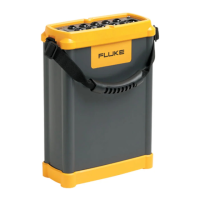1750
Getting Started Guide
22
azd119.bmp
Note
You can also download data by connecting your PC directly to the
Recorder with an Ethernet cable and run Power Analyze in the 1750
Live mode. All of the functions (controller, PDA, and Power View)
are duplicated in 1750 Live mode.
Power Type Diagrams
Power type diagrams are provided on Power View and Power Analyze and can
be referenced when you are setting up nominal power on the Recorder. The
diagrams are used an aid in making the correct test lead connections. The
following power type diagrams are for the standard power configurations:
• One-Phase Plus Neutral
• One-Phase IT No Neutral
• One-Phase Split Phase
• Three-Phase Wye
• Three-Phase Delta
• Three-Phase IT
• Three-Phase High Leg

